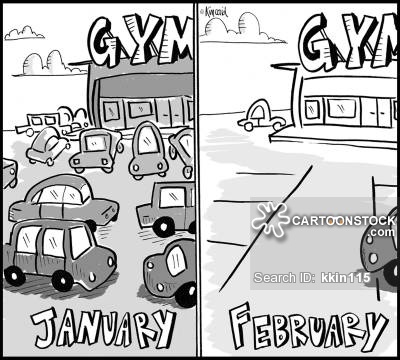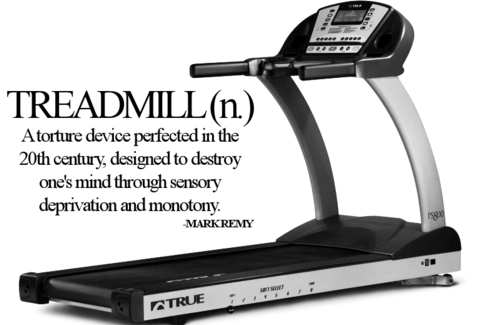Train the Brain! VLOG16
New Year’s Resolutions are BS Part 2
In the first part of this post we discussed S.M.A.R.T. goals. They are goals that are Specific, Measurable, Achievable, Relevant, and Timely. You’ll also recall that I added an S. for Sustainable. Because, once you have achieved a goal, what good does it do if you cannot sustain the gains? Whether your goals are related to weight loss, business, or your personal relationships, there are things that you can do to improve your odds of sustaining your improvements instead of falling back in to the old habits that you were trying to change to begin with.
To make the changes in your life permanent, you must make them a lifestyle change and focus on the process just as much as the outcome. And the way to focus on the process, is to create what I call process goals. Let’s apply this to the goal of losing ten pounds in ten weeks.
There are basically two levers that you can pull to lose weight. Those are calories in (your diet) and calories out (your metabolism). In today’s world, there are tons of easy ways to track these two levers accurately. Buy a Fitbit or a Garmin and download the app as an example. The device will provide a fairly accurate calorie burn number and you can easily enter your food intake for the calories in a portion. There you have it, a daily scorecard that will let you know if you are doing what you need to do to lose the weight. From here you can create a “process goal” of creating a 500-calorie daily deficit and track it.
To go a couple of steps further, now that you have a daily goal regarding calories, you can set “process goals” to impact the two levers. As an example, cutting down on soda, and anything with refined sugars will definitely decrease your calorie intake, and exercising will increase your calorie burn. So, if you set some process goals that looked like this: “Instead of soda I will drink water and I will run 30 minutes four times a week.” You will be creating new habits that will change your lifestyle permanently and help you achieve your goals. More importantly, once you have a achieved your goals, since this has become your new lifestyle, you will sustain your gains.
Here is the best part. Let’s say that you have achieved your goal and lost the weight. If you continue to track your weight weekly, and continue to track your daily calories in/out, you can make adjustments to your “process goals” to help stay on track. You see that you have gained a pound, take action right away! Increase your activity or look at what you have been eating. Have you strayed? Get back on track! Does everything look normal but maybe you need to increase your cardio? (Our metabolism slows as we get older!) You get the point.
What I am trying to say is, the difference between resolutions, that rarely get achieved and even more rarely, stick; and permanent changes that lead to a lifetime of improvements, is that permanent changes are made up of S.M.A.R.T.S. If you want help putting together an improvement plan for any aspect of your life, send me an e-mail! I love helping people achieve their goals.
I hope that this post and this blog helps! To receive new post notifications, newsletters, and post previews, please SUBSCRIBE!
For behind the scenes photos and comments on my training and personal life, follow me on Instagram: joe_the_runner Strava: Joe Randene YouTube: Joe Runner
Questions, comments, feedback? Please leave them in the comments section BELOW and we can have a discussion!
Training Overview for the Devil Dog Ultras 100 Mile Race VLOG14
New Year’s Resolutions are BS Part 1
Do not let that title confuse you, I am a huge believer in goals, but New Year’s resolutions normally are not goals. In fact, only 8% of people actually keep their resolutions. The new year is a great time to reflect and to hit the reset button for sure, but I’m going to show you a better way than simply saying “I’m going to lose 10 pounds.” The issue that I have with resolutions, is that the majority are either, unrealistic, too drastic, not well thought out, or unsustainable. Most likely a combination of all of these.
Based on my experience, you will greatly improve your chances of hitting your goals if they are S.M.A.R.T. I did not come up with this, I was taught, and I cannot find out who to give credit to, as this acronym is all over the coaching world. I do add my own little twist to it at the end here, so hold on. What are S.M.A.R.T. goals? They are:
Specific
Measurable
Achievable
Relevant
Timely
Sustainable (I added this one, as I think that it way too often overlooked)
Specific
Generic goals simply do not get met because there is no real direction. Let’s stick with our weight loss goal above. When do you want to lose 10 pounds by? Someone can say they want to lose 10 pounds, but if they haven’t placed a date to be accountable by, it becomes very easy to pick up that next cookie. Goals need to be as specific as possible and can even help with visualization. You should be able to picture in your mind what it will look and feel like when you achieve your goal. Be as specific as possible.
Measurable
This particular goal is measurable in regard to the weight loss, but as noted, not the time line. This is an area that people often do not put enough time in to because generally they feel that what they will measure is obvious. However, there are usually multiple metrics that can be measured to improve the probability of success and accountability. For weight loss, you can measure calories in and calories burned, as leading indicators of whether or not you will hit your goals. So, as you can see, it makes sense to really think this through and not only measure the ultimate goal, but also, what I call “process goals”.
Achievable
Surely losing 10 pounds is achievable? Well, what if the goal was lose 10 pounds in 3 days? This MIGHT be achievable, but does it make good sense? Unless you are a fighter trying to make weight, probably not. And if you set goals that are not achievable, you are likely to get frustrated, feel like you have failed, and give up. Lose 10 pounds in 10 weeks, is a much more achievable goal, that you have a much better chance of hitting and feeling like you have succeeded. And, success breeds success.
Relevant
Your goals have to mean something to you. If you are 6 feet tall and weigh 150 pounds, losing 10 pounds probably isn’t important to you! To improve your odds of success, make sure that you clearly understand why you are setting the goal in the first place, and be completely honest with yourself. No one else has to know your why. People that I work with tell me all the time that their reasons for setting a particular goal is “stupid” or “shallow”. That, my friends, is bullshit. You want to look good in a speedo? Great! You want to climb Mt. Everest? Go for it! You do you and be proud.
Timely
Man, I cannot stress this one enough. Losing 10 pounds by tomorrow doesn’t work and neither does “before I die”. Be reasonable here and do not underestimate the importance of this. Why? ACCOUNTABILITY. Having a time line that is achievable removes excuses and makes you accountable. If you are trying to lose 10 pounds in 10 weeks, you are much more likely to stick to eating healthy and exercising because you know that this is an achievable goal. If your goal was to lose it by tomorrow, you might as well eat the cake, because it ain’t happening anyway. And if you have a year, well you can always catch up next week, right?
Sustainable
I’ll give you a little taste here, but this will be a post on its own within a few days. When people find out that I lost 130 pounds, they say “Great job! You must be proud?” Well, I am. But not of the weight loss. Anyone can lose weight, I am proud that I have SUSTAINED the weight loss. Going back to the 10 pounds in 10 weeks, you can achieve that in so many ways. As an example, let’s say all you eat is cabbage soup and you lose the 10 pounds, is that sustainable? No way. And once you start to eat other food, guess what? You will most likely gain the 10 pounds back and maybe more. So how do you sustain your gains, whether it is weight loss or anything else? Here’s a hint: Lifestyle change, process, and process goals. The journey my friends… I’ll address this in detail next post.
I hope that this post and this blog helps! To receive new post notifications, newsletters, and post previews, please SUBSCRIBE!
For behind the scenes photos and comments on my training and personal life, follow me on Instagram: joe_the_runner Strava: Joe Randene YouTube: Joe Runner
Questions, comments, feedback? Please leave them in the comments section BELOW and we can have a discussion!
2017 The Year in Review BLOG 14
Goal Race Announcement 2018 VLOG13
Joe the Runner Interview on Sany Delight’s Blog
Sany Delight is a social media personality and Chicago foodie that I met via FitBit. She was attempting her first marathon and we struck up a conversation and I offered to help her with her training and nutrition. We have become friends and I am proud to say that Sany completed the Chicago Marathon!
She has profiled me on her blog asking questions such as “Why is running such a large part of your life?” and “What advice do you have for those that hate running? How do you get someone from disliking running to actually enjoying it?” and many more! Please click here to read the profile and enjoy! Thanks Sany!!! And if you want to see some great food, check out her Instagram!
I hope that this post and this blog helps! To receive new post notifications, newsletters, and post previews, please SUBSCRIBE!
For behind the scenes photos and comments on my training and personal life, follow me on Instagram: joe_the_runner Strava: Joe Randene YouTube: Joe Runner
Questions, comments, feedback? Please leave them in the comments section BELOW and we can have a discussion!
I Hate the Dreadmill! But…
I’m an optimist by nature. Where people see challenge, I see opportunity. Where people see the ugly in the world, I choose to focus on the beauty. Deep inside I know that there is more good than bad, and that we are lucky to be alive at this point and time in history, and that the next generation will be better than ours. BUT, I cannot seem to embrace the treadmill. Running and going nowhere just doesn’t appeal to me. I’ll run in rain, snow, heat, ANYTHING to avoid it. When it comes to the treadmill, I am a hater and, dare I say, a pessimist. Yuck!
So, when one of my followers asked me if I thought they could train, almost exclusively, on a treadmill, and be effective, I had to put that all aside and be objective. As much as I hate the dreadmill, it is still a great tool that should be in any runner’s toolbox. The reason that I say that, is that there are many pros to the treadmill despite the boredom and monotony of feeling like a hamster on a wheel, and there are ways to cope with the negatives, such as listening to music, watching TV, or varying your workout. Let’s dive into those positives.
Convenience – If you have a treadmill in your home, or at a hotel where you are staying, it definitely makes it easy to squeeze a run in no matter the time of day. And if you are at the gym, you can easily do cardio and cross train. I often use the treadmill when I travel if I don’t have a lot of free time and need to sneak in a run.
Safety – As the days get shorter, more of us runners are forced to run in the dark, which can be dangerous for many reasons. We struggle to see the terrain which can cause falls, and drivers struggle to see us! And, unfortunately, women have the added risk of assault during their solo runs as well. All of these risks are mitigated via the treadmill.
Control of Your Workout – When running on a treadmill, you can control your pace, your incline, and your decline. You literally can cater a workout to your specific needs and ensure that you hit it all by just pushing buttons.
Control of Your Climate – Whether it’s hot outside or cold outside, rainy or sunny, you can control the climate and get your run in. Trust me, I understand that eliminating the elements can actually be a con, especially when you go to race and the weather is bad, but a question that someone asked me regarding training with lupus got me doing some research and really opened my eyes to something. Many illnesses, including lupus, are impacted by heat, uv rays, cold, etc. And people that are training through these issues can really benefit from climate control. So instead of losing valuable training miles due to variables that are out of their control, the treadmill is very often the perfect solution for them.
Despite the fact that I prefer the trails and all of the beauty that they possess, my conclusion is that you can train, almost exclusively, on a treadmill, and achieve your running goals. My opinion is that, just like any training plan, you need to build your workouts with intention. Every run should have a purpose with clear goals, and you should run consistently, ensuring that you are building your cardiovascular fitness. If your race has uphills and downhills, replicate those during some of your sessions. And while the treadmill will never replicate all of the variety of running outdoors, you can achieve a high level of fitness using one, and show up on race day with confidence.
I hope that this post and this blog helps! To receive new post notifications, newsletters, and post previews, please SUBSCRIBE!
For behind the scenes photos and comments on my training and personal life, follow me on Instagram: joe_the_runner Strava: Joe Randene YouTube: Joe Runner
Questions, comments, feedback? Please leave them in the comments section BELOW and we can have a discussion!





